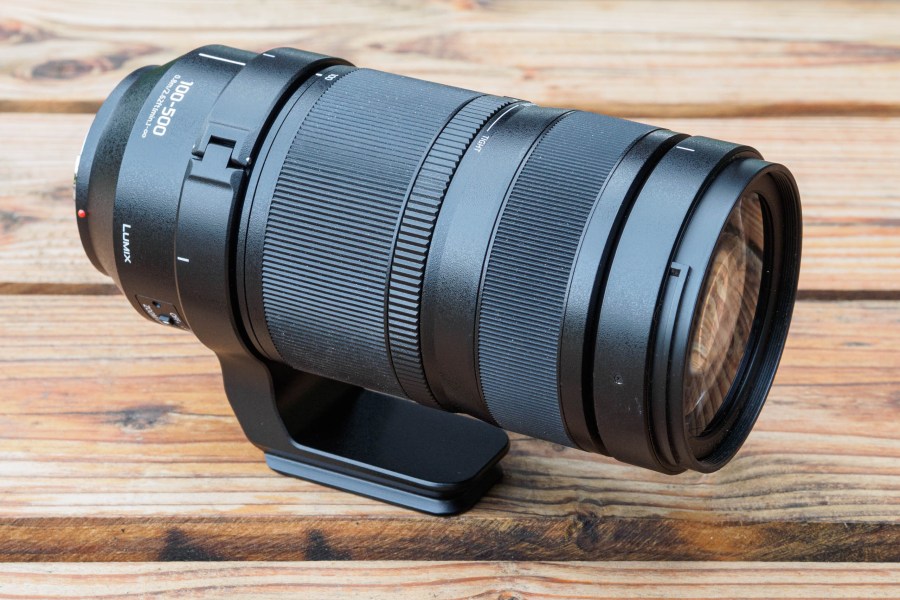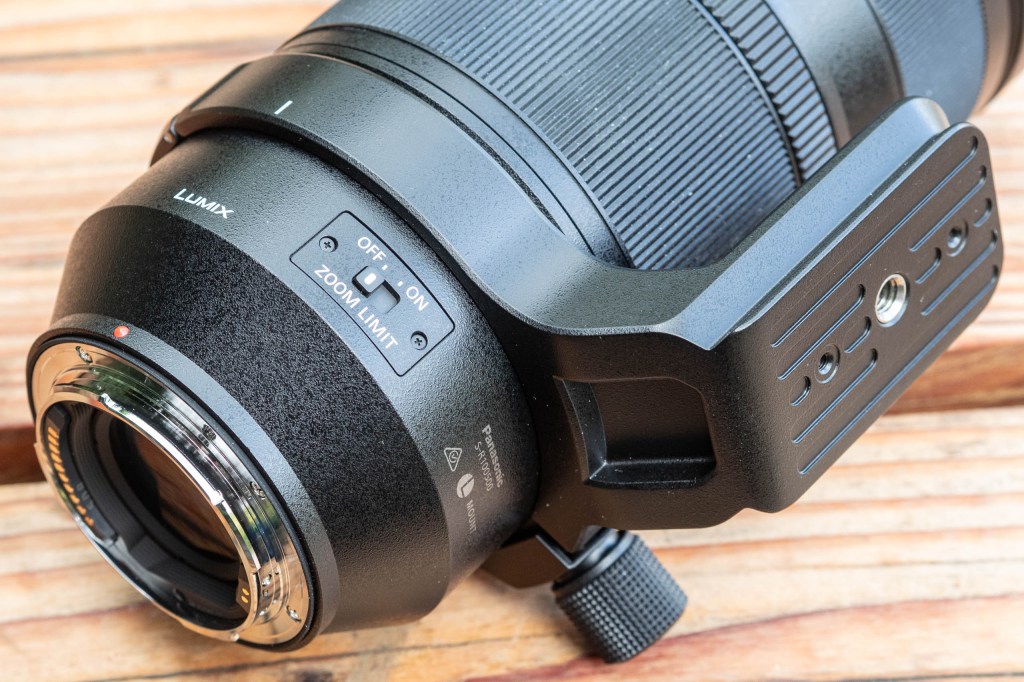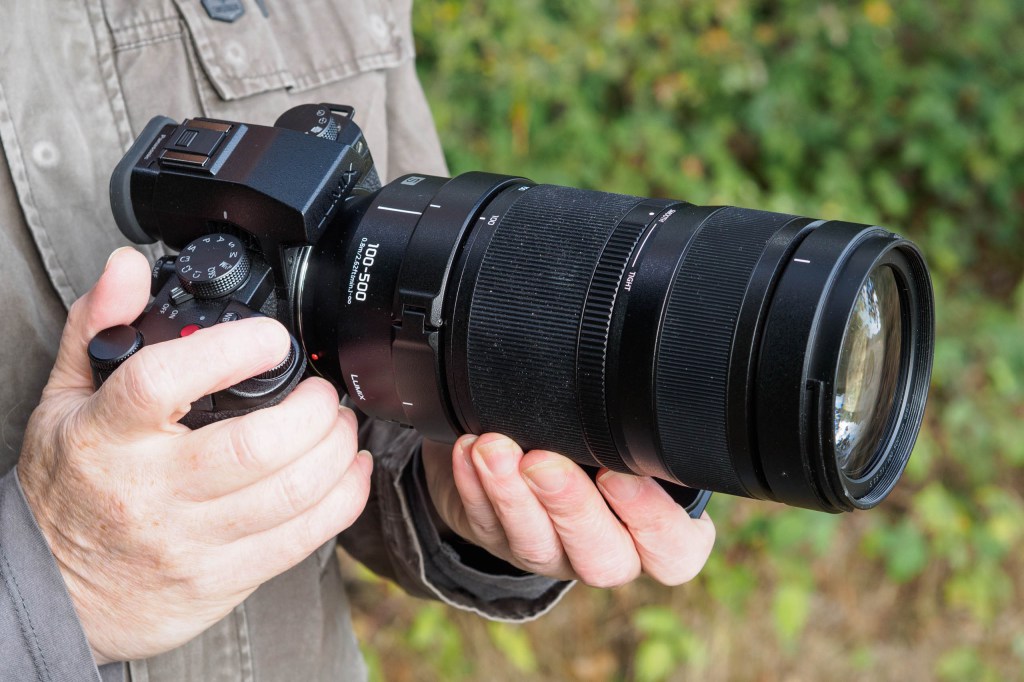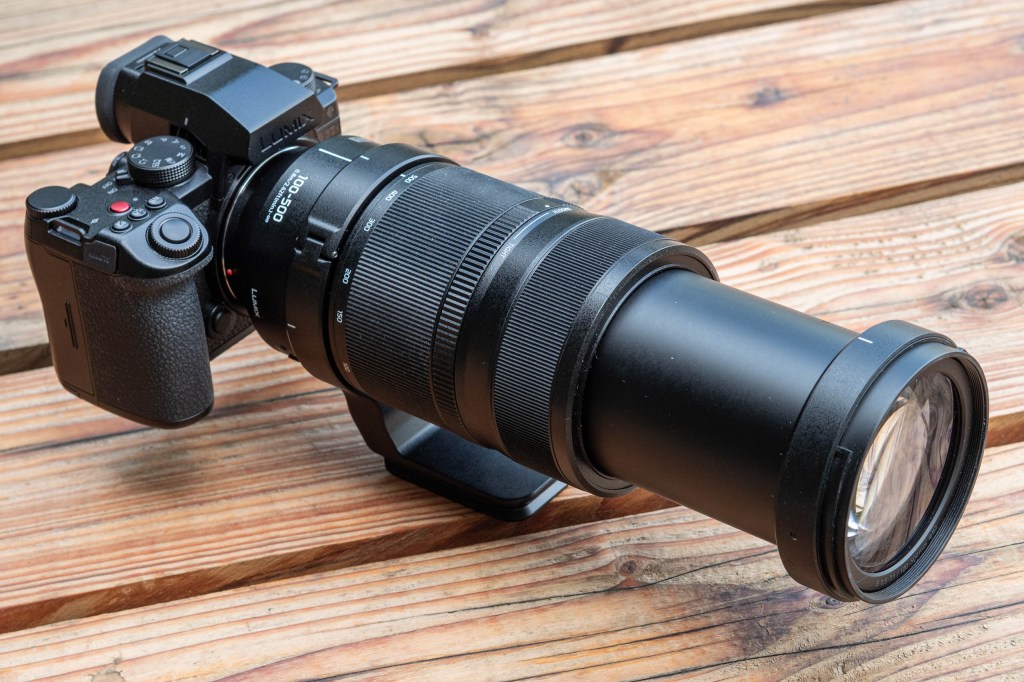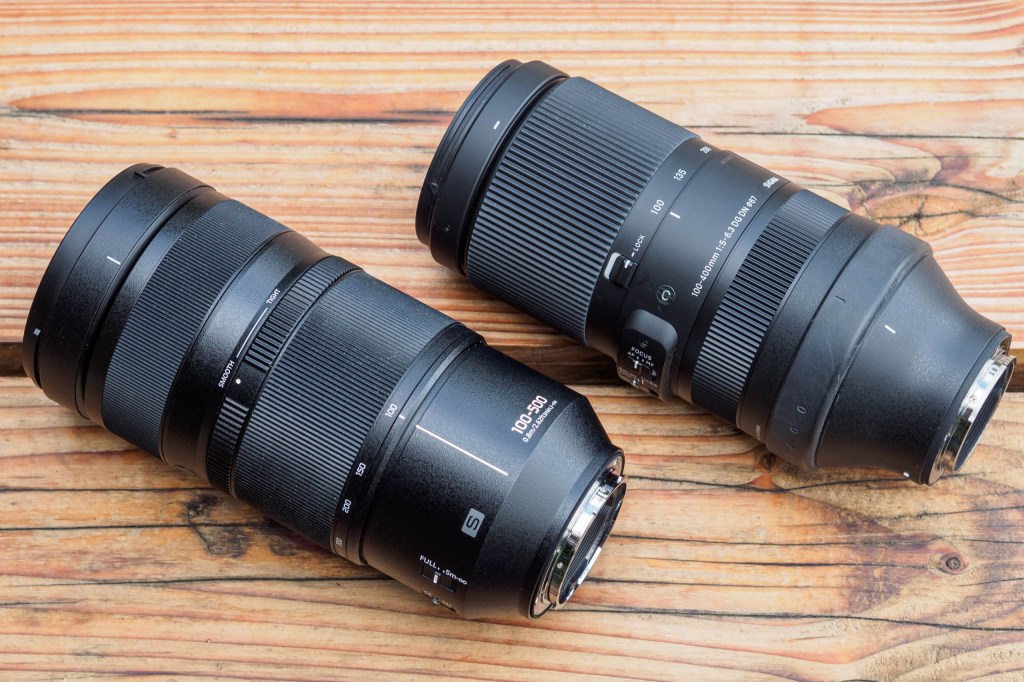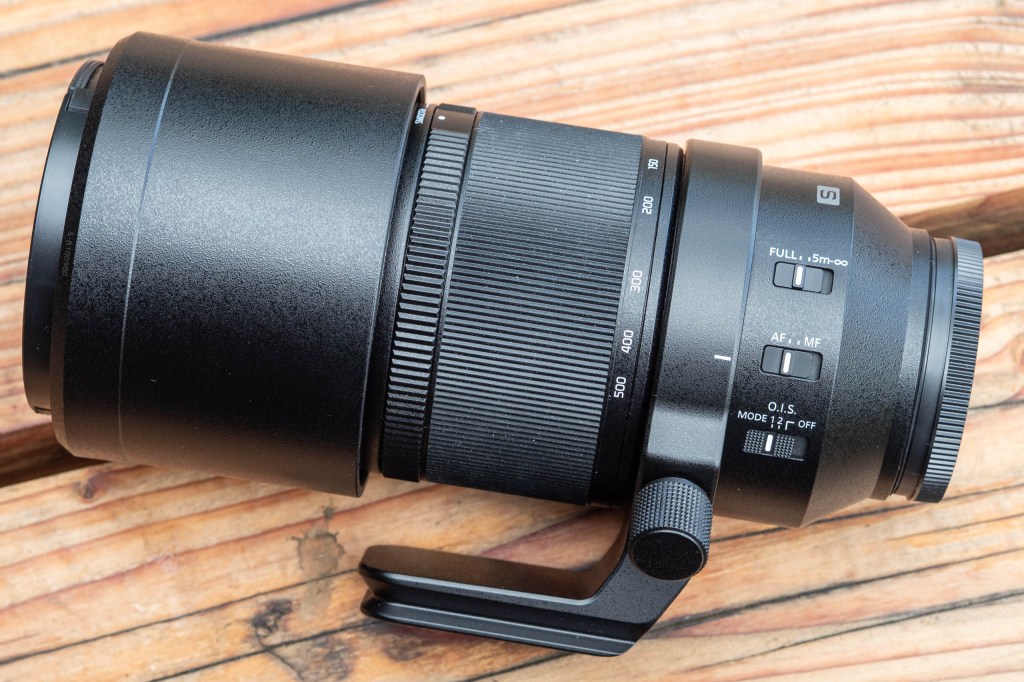Amateur Photographer verdict
The Panasonic Lumix S 100-500mm F5-7.1 OIS is a fine telezoom that packs a long reach into a remarkably portable package. It delivers nice, sharp images and its optical stabilisation is superb, too.- Very compact for a 500mm zoom
- Impressive optical quality
- Silent, accurate autofocus
- Remarkably effective optical stabilisation
- Zoom action too tight and slow (at least on early review samples)
- Autofocus can struggle with large distance shifts and moving subjects
The Panasonic Lumix S 100-500mm F5-7.1 OIS is the firm’s longest telephoto zoom yet for its L-mount full-frame mirrorless system. It’s impressively small and lightweight given its 500mm range, being similar in size to conventional 100-400mm zooms. This is a lens that should appeal to photographers shooting distant subjects, including sports, wildlife, airshows, motorsports, or other kinds of action photography.
Panasonic Lumix S 100-500mm F5-7.1 OIS at a glance:
- £1799
- Ultra-telephoto zoom
- Dust and splash-resistant construction
- 7 stops image stabilisation
- 196.1mm long, 1285g
- For L-mount cameras only
However, while this may be Panasonic’s longest full-frame zoom, it’s not the only option available to L-mount users. In practice, it’ll be going up against two fine alternatives from Sigma. Firstly, there’s the Sigma 100-400mm F5-6.3 DG DN OS, which is about the same size but offers a shorter zoom. Meanwhile the Sigma 150-600mm F5-6.3 DG DN OS provides even longer reach, but is considerably larger and heavier in return.
At $2100 / £1799, the Lumix 100-500mm costs rather more than either of these rivals, which are priced at $1049 / £899 and $1649 / £1199, respectively. But on the other hand, it’s less expensive than similar full-frame telezooms from the likes of Canon, Nikon and Sony. On paper it certainly provides a tempting combination of long zoom range and portable dimensions, but do the results justify the price?
Features
Optically, Panasonic has employed 19 elements in 12 groups, including 2 extra-low dispersion (ED) and 2 Ultra-ED (UED) glass elements to suppress colour fringing due to chromatic aberration. In addition, 2 elements made from ultra-high refractive (UHR) glass are used to correct for field curvature.
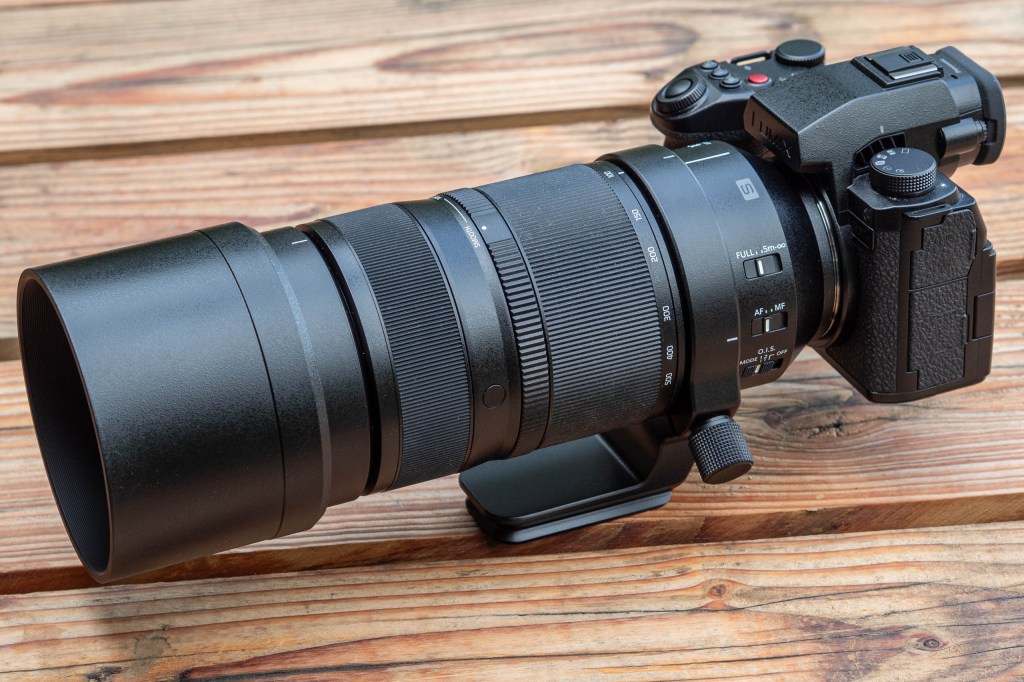
A Dual Phase Linear Motor drives the focusing, promising fast and silent autofocus. The minimum focus distance increases from 0.8m to 1.5m as you zoom in, with a maximum magnification of 0.36x. This could be good for photographing small subjects such as insects without disturbing them.
Focus breathing is suppressed optically, and equally importantly, the firm says the lens supports manual focus while zooming. In practice, this means the focus shouldn’t drift as you zoom in or out (in technical terms, the lens behaves as if it’s parfocal).
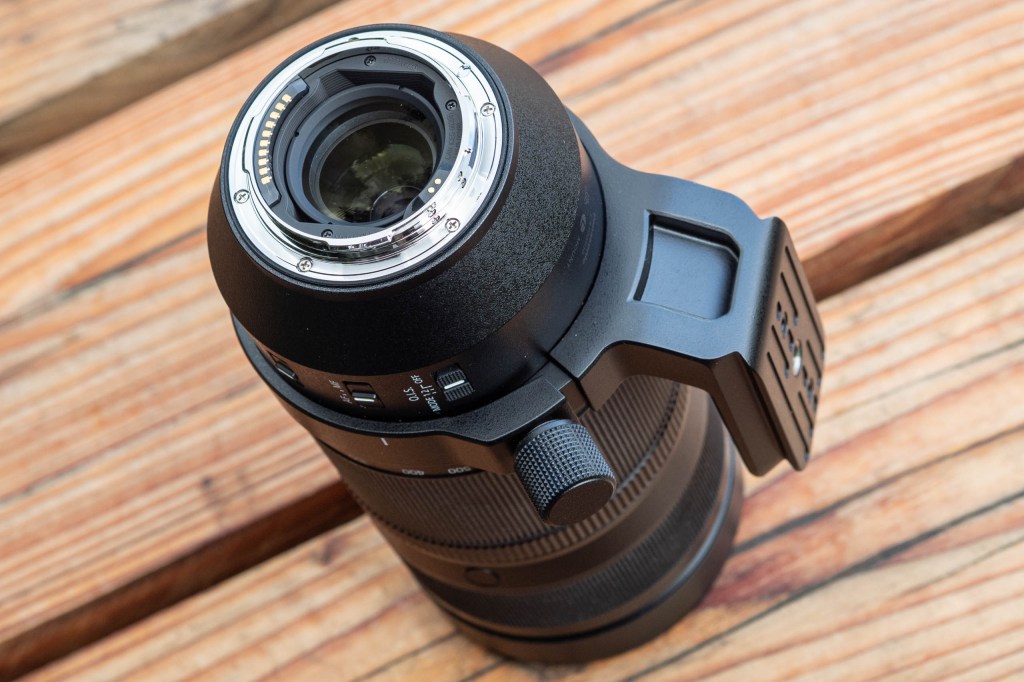
Panasonic is promising “industry leading” optical image stabilisation, with up to 7 stops of shake reduction when shooting hand-held. The barrel boasts dust and splash-resistant construction, and a fluorine coating helps keep the front element clean of raindrops or fingerprints. The lens should also work in temperatures down to -10° C.
A removable tripod mount ring comes in the box and features an Arca-Swiss compatible foot that will clamp directly onto many heads. You also get a large cylindrical hood, with a locking button to help hold it in place. A thread at the front accepts 82mm filters.
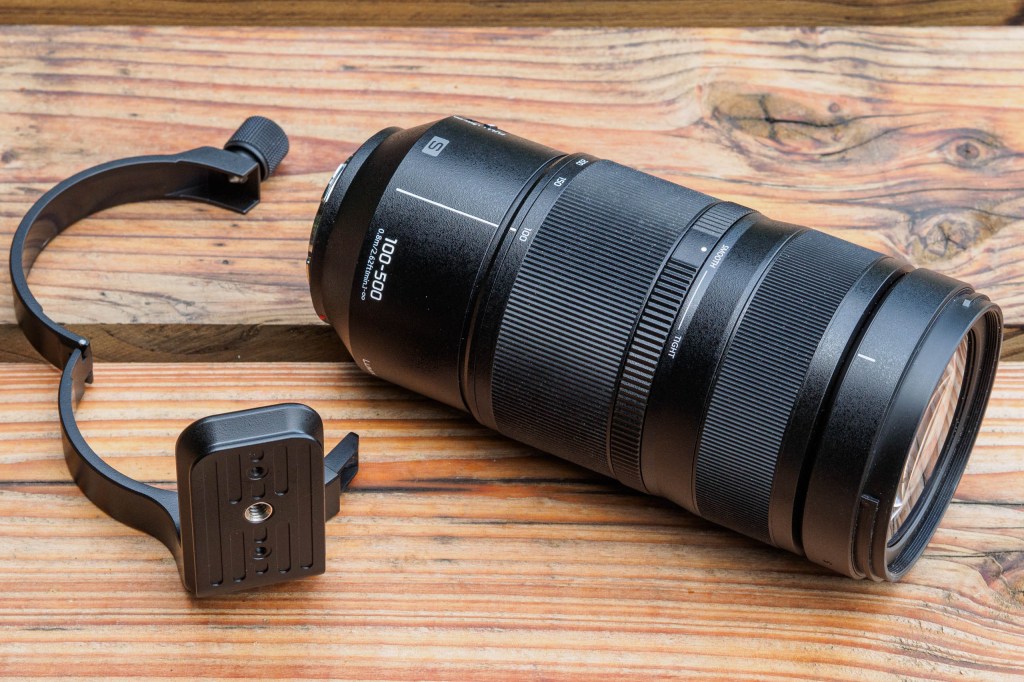
For those who need even greater reach, the 100-500mm is also compatible with teleconverters. To use them, its wide end needs to be restricted to its 150mm setting via a Zoom Limit switch on the barrel, which prevents the rear element of the lens from contacting the front of the converter. With the DMW-STC14 1.4x teleconverter, you get a 210-700mm F8-10 lens, while with the DMW-STC20 2x teleconverter, it’s a 300-1000mm F11-14 combination.
Build and Handling
Physically, the Lumix 100-500mm measures 92mm in diameter by 196.1mm in length, and weighs in at 1,285g on its own, or 1,595g including the caps, hood and tripod mount. This means it’s surprisingly close in terms of size and weight to the Sigma 100-400mm F5-6.3, despite its longer range. It’s also noticeably smaller and lighter than other 500mm telezooms, such as the Canon RF 100-500mm F4.5-7.1L IS USM or the Tamron 150-500mm F5-6.7 Di III VC VXD.
I tested the lens on the 24MP Panasonic Lumix S5IIX camera, and thanks to its relatively svelte dimensions, I found they gave a very workable combination. The setup was easy to use hand-held, with no real need for any kind of support such as a monopod. As a result, after my first shooting session, I removed the tripod mount ring and left it at home.
Build quality feels nicely robust, despite the relatively light weight. The lens extends by about 8cm on zooming, and there’s absolutely no play or wobble of the front section at the 500mm position. The only slight disappointment is that the tripod collar doesn’t click at 90-degree intervals, but that’s not uncommon.
As for the control layout, it’s mostly entirely conventional, with a wide zoom ring that’s perfectly placed at the centre of the barrel, and a manual focus ring towards the front. Switches on the side control AF/MF, OIS mode, and the focus limiter, with the latter restricting the minimum distance to 5m. This should reduce the risk of hunting when shooting subjects that you know aren’t going to get particularly close.
A lens-function button is provided on the side, as debuted on the Lumix S 24-60mm F2.8. It’s distinctly small, but even so, it falls quite naturally under your thumb in landscape format. However you don’t get a second button for vertical shooting, which is disappointing given the price.
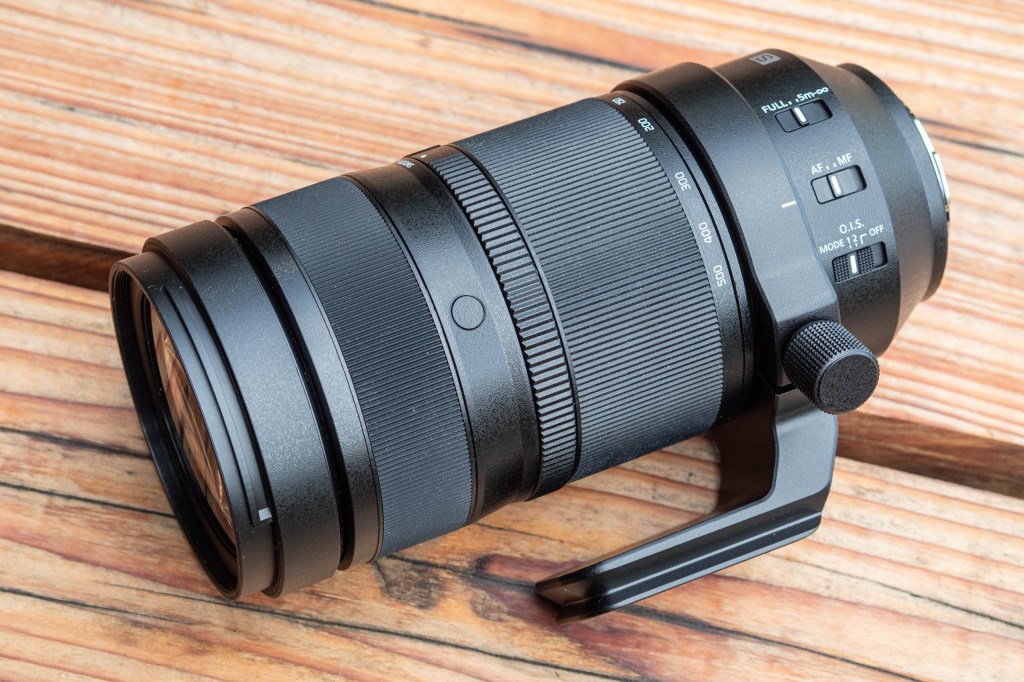
Panasonic has added a new ring for adjusting the zoom tension, which is marked from ‘smooth’ to ‘tight’. Unfortunately on my review sample, it had very little effect. Even when set to the smooth position, the zoom was distinctly tight, which meant I couldn’t zoom quickly from 100mm to 500mm or back again.
The zoom action was too tight for quick push-pull zooming, too, unlike its Sigma rivals. However, the flip-side is that the lens is essentially immune to zoom creep (although that’s what the ‘tight’ position should be for).
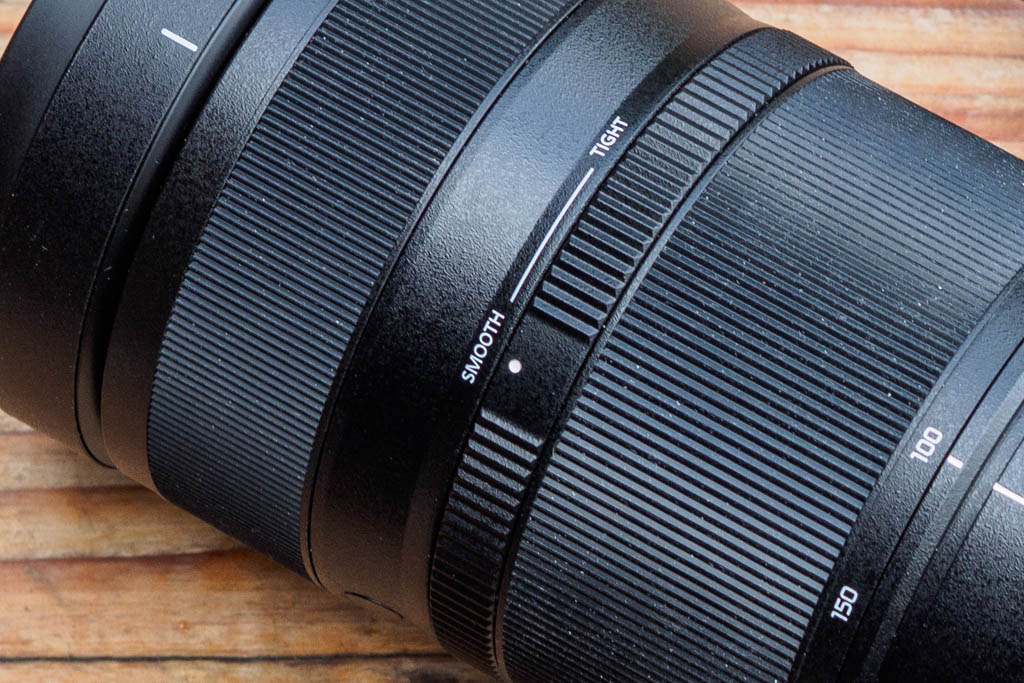
This kind of slow zooming can be a real problem for certain subjects, for example sports such as football, where the play can change from distant to close very quickly. Panasonic tells me it’s aware that this is a problem with early review samples, and that it will be ‘resolved’ in full production lenses.
Fingers crossed that this will indeed be the case – the firm’s otherwise excellent 100-400mm for Micro Four Thirds had a similar problem with its zoom-lock ring, and it’s not clear whether it was ever fully resolved. If it’s something that could be a problem for you, I’d advise getting the lens in-hand if at all possible, and ascertaining whether it will suit your needs.
Maximum aperture vs focal length
Below you can see how the maximum aperture of the Lumix 100-500mm decreases on zooming in. I’ve also included corresponding figures for the Sigma 100-400mm, which I happened to have available for comparison (note though that it’s the E-mount version, which means it only reports the aperture in 1/3 stop steps).
| Focal length | Lumix 100-500mm | Sigma 100-400mm |
| 100mm | f/5 | f/5 |
| 150mm | f/5.6 | f/5.6 |
| 200mm | f/6.1 | f/5.6 |
| 300mm | f/6.5 | f/6.3 |
| 400mm | f/6.7 | f/6.3 |
| 500mm | f/7.1 | n/a |
The take-home message here is that, despite offering a longer zoom in a similar size, the Lumix lens maintains a very similar light-gathering capability throughout the zoom range to its Sigma counterpart.
Autofocus
When it comes to autofocus, the good news is that, when faced with static subjects, the Lumix S 100-500mm is fast, silent, and consistently accurate, no matter where the subject is placed within the frame. I also found that it happily keeps up with relatively large and predictably moving subjects that the S5IIX found easy lock onto. I achieved a good level of success photographing motorbike racing, trains, and airliners coming in to land at Heathrow – with this kind of subject, the lens appears to do everything the camera asks of it.

Click on any sample image to see the full-resolution version
Unfortunately, I had much less success with fast, erratically moving subjects such as birds in flight. If the camera recognises them and manages to focus the lens in time, it’ll usually track quite effectively. The problem is that this doesn’t happen very often. But chances are, that’s mostly a weakness of the camera’s subject detection and tracking system, rather than a flaw with the lens itself.
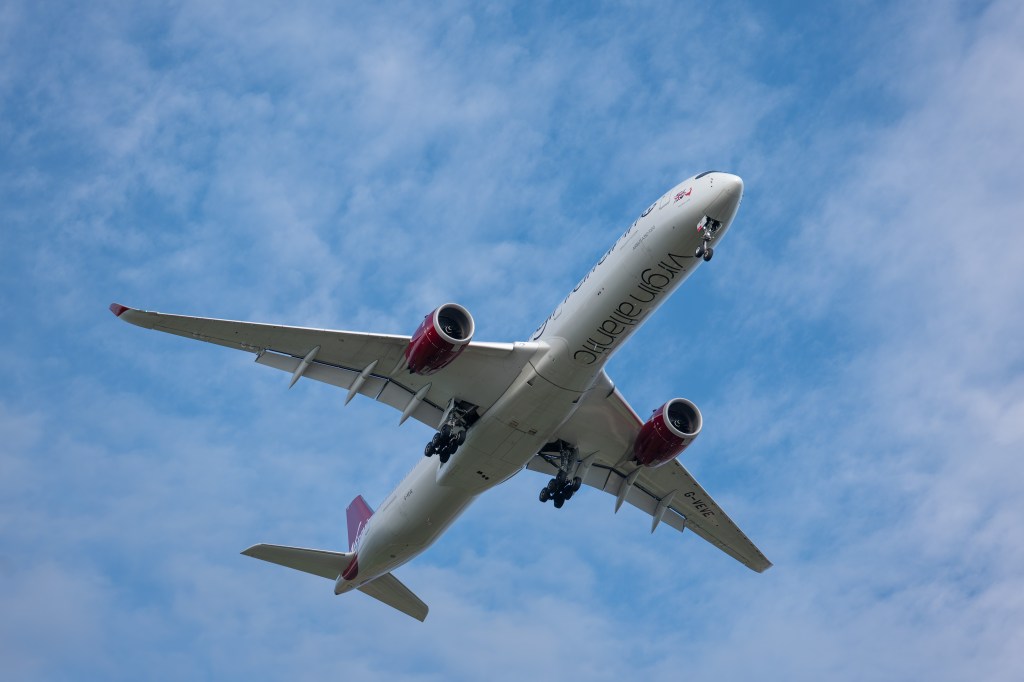
Another frustration is that if you have the lens focused on a distant object and try to shift to something much closer, or vice versa, it has a bad habit of getting stuck and not trying to reacquire focus, resulting in missed shots. In this review, I should have a nice close-up image of a kingfisher perched just four or five meters from me, but the camera simply refused to refocus from a longer distance position within the 30 seconds or so before it flew off again. But again, this was probably as much the fault of the S5IIX’s autofocus algorithms than the lens itself.
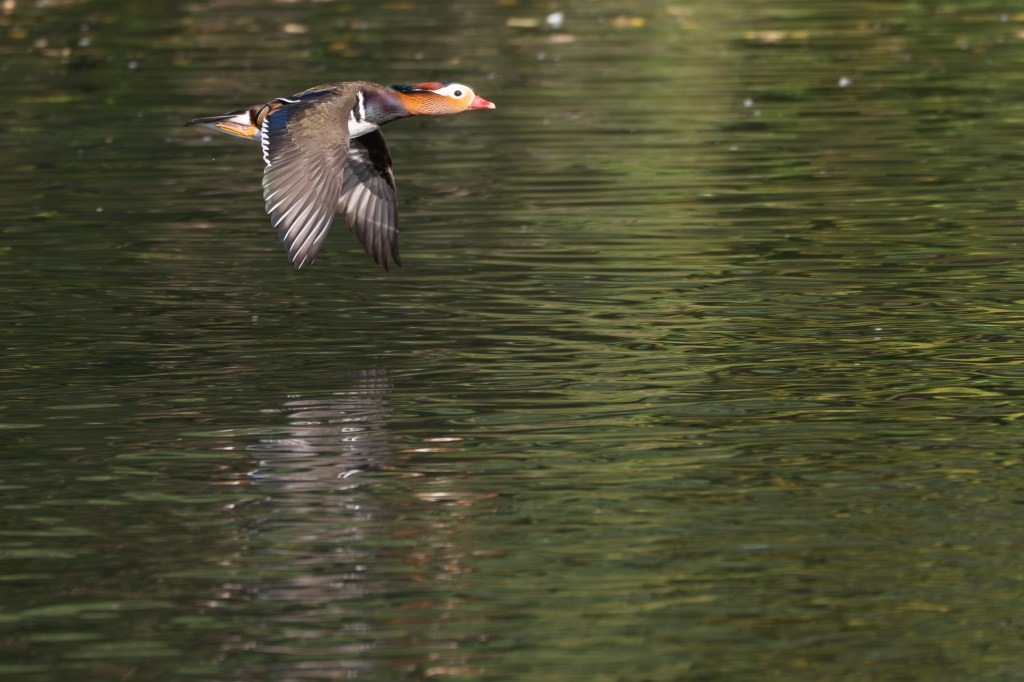
On a more positive note, videographers will be pleased to hear that the lens is every bit as well-behaved as Panasonic has promised. Focus breathing is minimal, so there’s no distracting zooming effect if you pull focus from one subject to another. Likewise, if you manually focus on a specific subject, it’ll stay in focus as you zoom from one end of the range to the other.
Performance
I’ve been really impressed by the images that I’ve got from the Panasonic Lumix S 100-500mm F5-7.1 OIS. It’s really sharp all the way across the frame throughout the zoom range, even at maximum aperture. This is important with the kind of subjects the lens is most likely to be used for, as you’ll often be shooting with the aperture wide open to keep shutter speeds high without unduly boosting the ISO.

Also, with unpredictably moving subjects such as wildlife, chances are you’ll frequently find yourself cropping your images from well off-centre. That’s absolutely no problem here.
Sharpness holds up very well across the full focus distance range, too, with the lens continuing to deliver good results at its minimum focus distance.

The image files look very clean, with no problematic distortion or colour fringing and minimal vignetting. If you turn off profiled software lens corrections in Adobe Camera Raw, you’ll see some pincushion distortion creeping in. But it’s pretty mild, and honestly, there’s no good reason to disable corrections anyway. Most users will only see the perfectly corrected images.

The lens’s inherent sharpness is aided by Panasonic’s optical stabilisation, which works exceptionally well. I was able to get crisp hand-held images pretty consistently at shutter speeds as low as 1/15 second. Chances are that for many of the subjects you’re likely to shoot with this lens, you won’t want to use speeds this slow anyway, as motion blur will become a problem. But it does help you compose your images accurately, and that’s really important at such long focal lengths.

Out-of-focus backgrounds are rendered nicely, too, especially when they are quite distant and the subject is fairly close. Of course, it’s possible to trip up the lens occasionally, and end up with some messy-looking results if you’re not careful. But that tends to be true with most lenses.

Perhaps the biggest point to note with this lens, though, is that like all small maximum-aperture telezooms, it is distinctly light hungry, and you’ll often have to boost the ISO considerably to accommodate the fast shutter speeds of 1/2000sec or higher that can be required to freeze subject motion. As a result, you’ll get the best results in bright, sunny conditions. On dull days with flat light, the results can easily look disappointing in comparison.

There’s also a natural temptation to shoot lenses like this over very long distances, which can lead to image distortion from atmospheric effects such as heat haze. These aren’t flaws with the lens, but they can give soft-looking images and so are worth keeping in mind.
Panasonic Lumix S 100-500mm F5-7.1 OIS: Our Verdict
With the Lumix S 100-500mm F5-7.1 OIS, Panasonic has created a fine telephoto zoom for L-mount users. It’s impressive how the firm has managed to squeeze 500mm reach into the size we’d expect for a 100-400mm zoom. The result is a lens that’s great for photographers shooting such things as wildlife or sports, who want to get extended zoom range in a portable package.
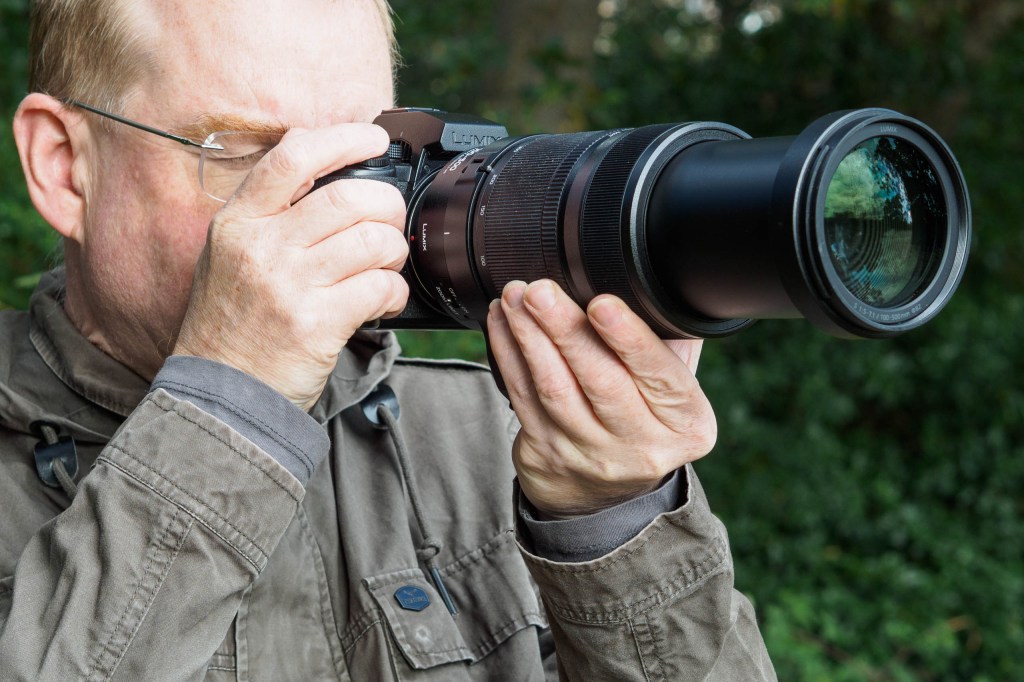
In fact, there’s a lot to like about this lens, and very little to criticise. Optically it’s very good indeed, and the image stabilisation is, in typical Panasonic fashion, uncannily effective. It’s lightweight and easy to handle given the zoom range, too. I really wish the zoom allowed quicker operation in its ‘smooth’ setting, and I hope Panasonic make good on their promise to fix this in full-production samples.
Autofocus is fast, silent, and well-behaved for video shooters. However, my biggest disappointments came with its reluctance to shift focus though long changes between near and far, and to track erratically moving subjects. Much of this must be blamed on the camera, though, with the lens exposing the weaknesses of the S5IIX’s AF algorithms.

Overall, though, I was impressed by the Lumix S 100-500mm. It offers a useful middle ground between the Sigma 100-400mm and 150-600mm, giving that bit extra reach for those who don’t want to carry around a larger lens. Its price is steep in comparison, though, at least at launch. But if you don’t mind that, it’s a fine choice for L-mount users looking for a long telephoto zoom.

Follow AP on Facebook, Instagram, YouTube and TikTok.
Panasonic Lumix S 100-500mm F5-7.1 IS full specifications
| Price | $2100 / £1799 |
| Filter Diameter | 82mm |
| Lens Elements | 19 (2 UED, 2 ED, 2 UHR) |
| Groups | 12 |
| Diaphragm blades | 11 |
| Aperture | f/5-7.1 – f/29-40 |
| Minimum focus | 0.8-1.5m |
| Maximum magnification | 0.16-0.36x |
| Length | 196.1mm |
| Diameter | 92mm |
| Weight | 1,285g (1,595g with caps, hood, tripod ring) |
| Lens Mount | L-mount |
| Included accessories | Caps, hood, tripod ring |

